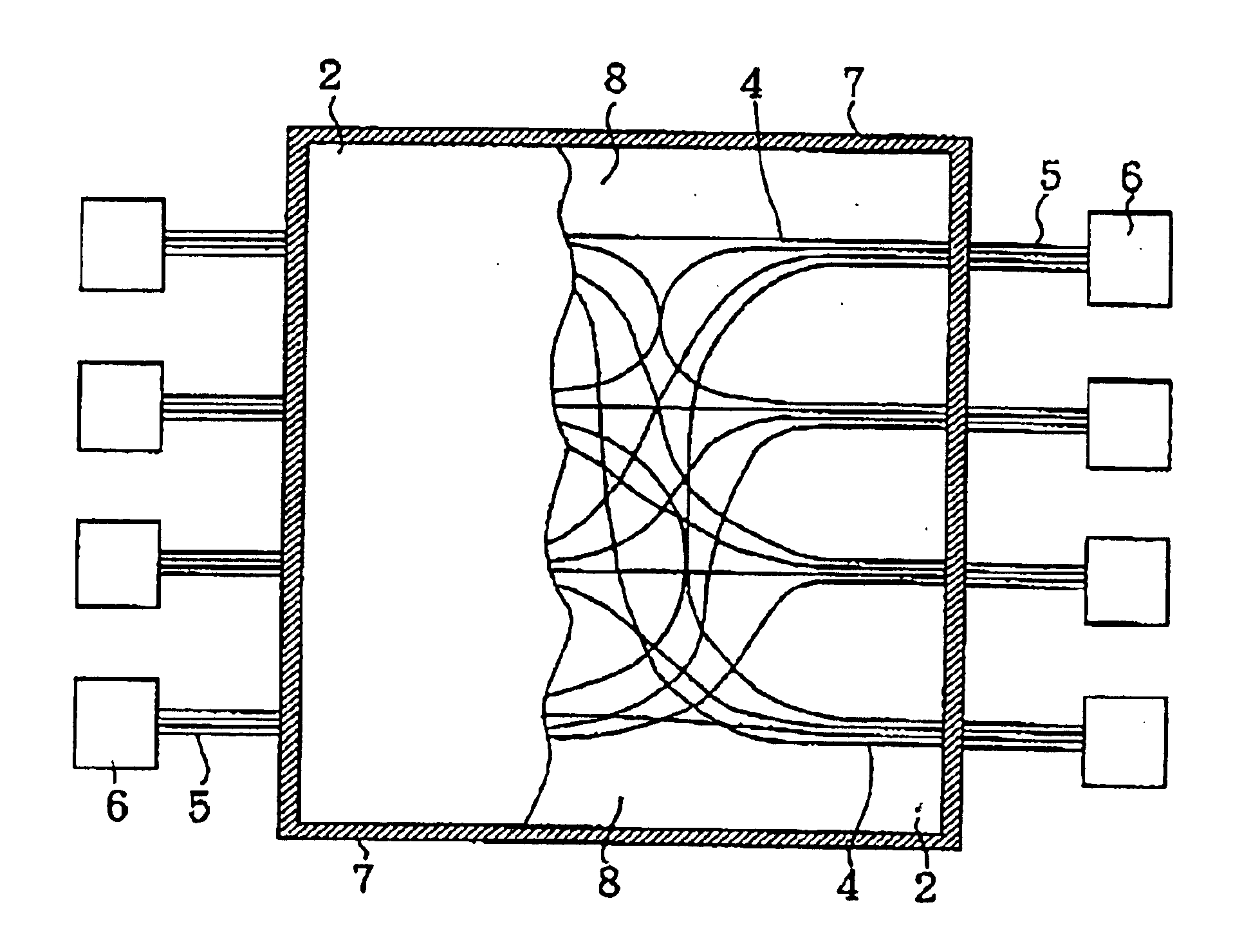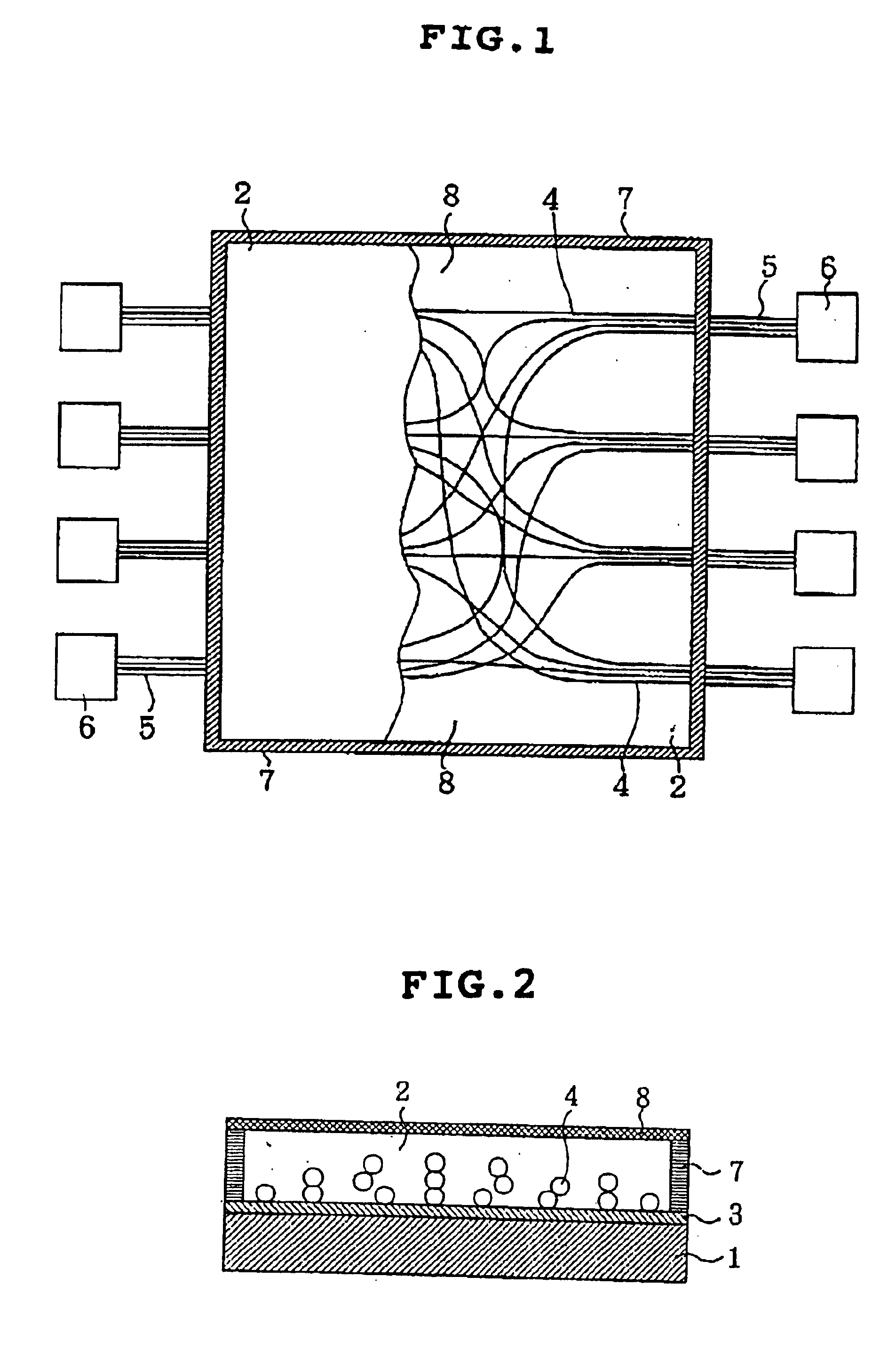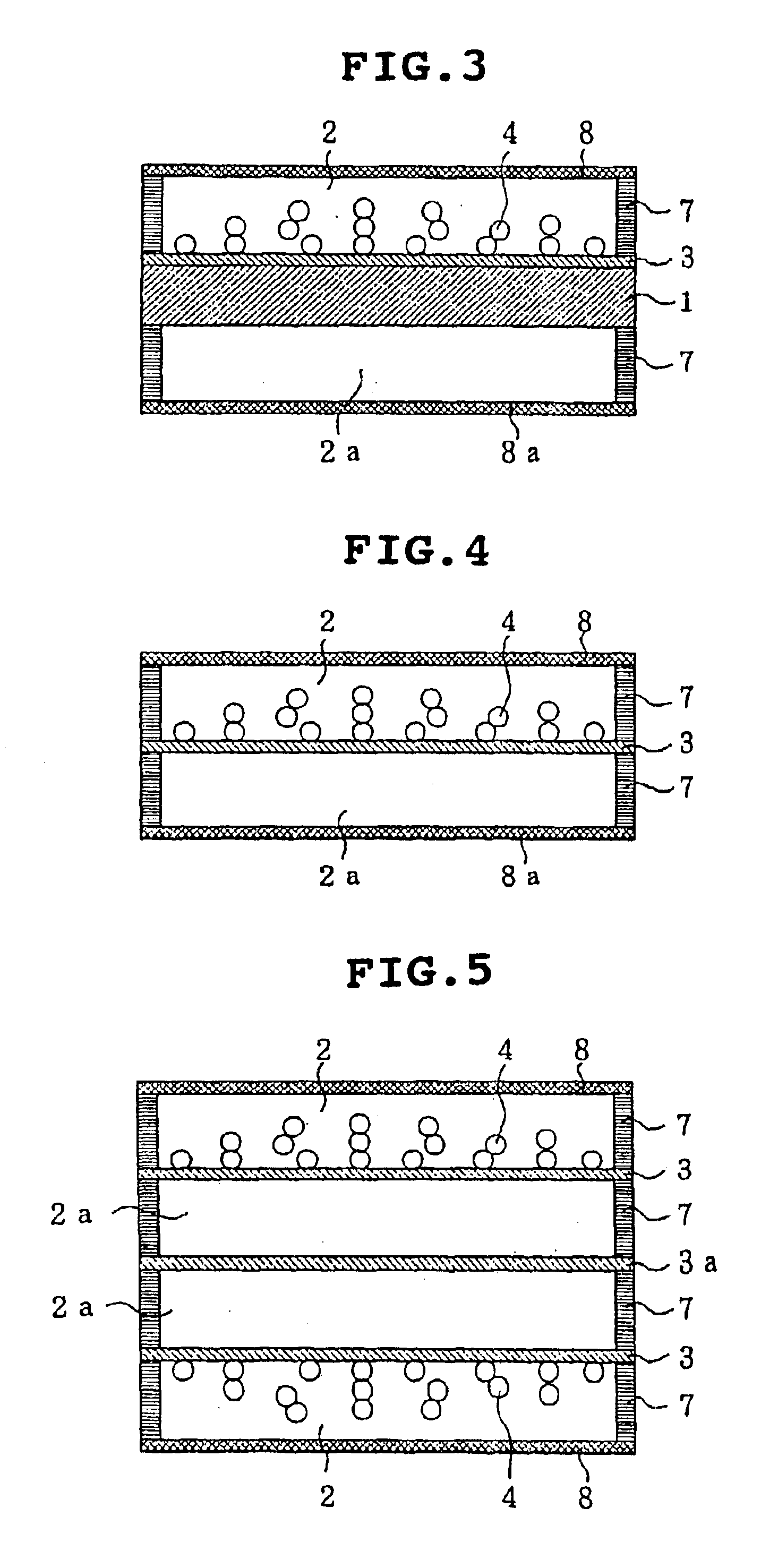Optical connection component
a technology of optical connection and component, applied in the direction of optics, optical waveguide light guide, instruments, etc., can solve the problems of loss of intactness of routing pattern, displacement of routing pattern, loss of protection layer, etc., and achieve the effect of high flexibility, easy handling, and high flexibility
- Summary
- Abstract
- Description
- Claims
- Application Information
AI Technical Summary
Benefits of technology
Problems solved by technology
Method used
Image
Examples
first embodiment
The optical interconnection apparatus of the first embodiment according to the present invention can be fabricated as will be described next. For example, an adhesive sheet is firstly produced by forming the above-mentioned adhesive layer on one side of a flexible film substrate having a two-dimensional plane. Optical fibers are then routed in a desired pattern by the above-described adhesive layer. At this time, the opposite ends of the optical fibers are located extending out from the film substrate such that they can be adapted as end portions for permitting optical interconnections with optical connectors or the like. As a process for arranging the adhesive layer, it is possible to adopt a process, in which the adhesive layer is arranged by coating an adhesive, either as it is or in the form of a coating material dissolved in a solvent, on the film substrate by a method such as roll coating, bar coating, blade coating, casting, dispenser coating, spray coating or screen coating,...
second embodiment
The optical interconnection apparatus of the second embodiment according to the present invention can be fabricated as will be described next. An adhesive sheet is first prepared by forming an adhesive layer on a release film, and optical fibers are routed in a desired pattern on the adhesive layer. Then, a protective resin layer is formed on the routed optical fibers. In concrete, the first protective resin layer is formed by arranging an edge-dam along or in the vicinity of the peripheral edges of the release film, and using a silicone-based rubber-like or gel-like material for producing an flexible protective resin layer. The release film on the back side is then removed. A second protective layer is thereafter formed on the exposed the first protective resin layer by arranging an edge-dam along or in the vicinity of the peripheral edges, and using a silicone-based material which is the same as or different from that of the first protective resin layer. On the resulted first and ...
example 1
An acrylic adhesive was applied to a side of a polyimide film of 125 μm in thickness so as to be a thickness of 100 μm to prepare a film substrate (size: 120 mm×100 mm). On the film substrate, optical fibers (product of The Furukawa Electric Co., Ltd., 250 μm in diameter) were routed per port (an exit of optical fibers from an optical interconnection apparatus) as follows. Namely, 4 optical fibers were arranged in parallel with each other at pitches of 250 μm per port, and 4 ports (each port was formed of 4 optical fibers) were formed at pitches of 30 mm on each of opposite sides, i.e., longer sides of the polyimide film. Each optical fiber was routed extending from one of the longer sides of the polyimide film to the other longer side. The routing to the individual ports on the opposite sides was designed such a manner that each of the optical fibers intersected in the central part of the sheet and the maximum overlapped number of optical fibers was 4 fibers.
Around the polyimide fi...
PUM
 Login to View More
Login to View More Abstract
Description
Claims
Application Information
 Login to View More
Login to View More - R&D
- Intellectual Property
- Life Sciences
- Materials
- Tech Scout
- Unparalleled Data Quality
- Higher Quality Content
- 60% Fewer Hallucinations
Browse by: Latest US Patents, China's latest patents, Technical Efficacy Thesaurus, Application Domain, Technology Topic, Popular Technical Reports.
© 2025 PatSnap. All rights reserved.Legal|Privacy policy|Modern Slavery Act Transparency Statement|Sitemap|About US| Contact US: help@patsnap.com



